It doesn’t matter how much you love kayaking, it can be frustrating to find a place to store it. You might have considered putting your kayak in the garage, but that’s not always possible and sometimes even when it is an option, there may not be enough room. This blog post, “how to store a kayak” will guide you through how to store a kayak and storage ideas for your kayak.
Contents
Preparing For Storage
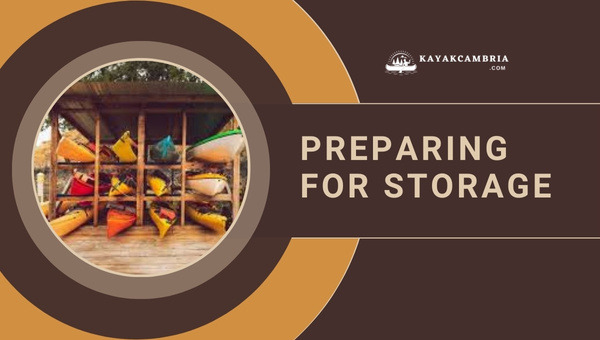
Before storing your kayak, you should do a few things. This helps the kayak be in good condition when you are ready to take it out again.
Selecting A Spot To Store Your Kayak

It can be difficult to find a spot to store your kayak that is easy for you to get to and where it won’t take up too much space. My suggestion is to have two spots, one for temporary storage during summer and kayaking months and another one for a longer duration during winter.
During summertime, you can store your kayak outside temporarily but during winter store it indoors as you have to keep it away from freezing or high temperature.
Cleaning The Kayak
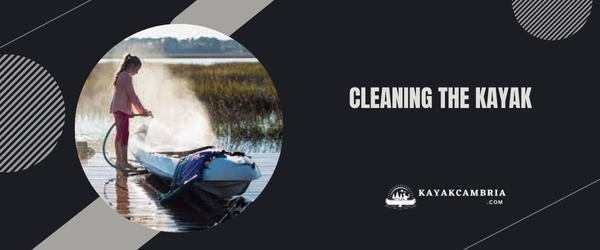
It’s important to clean your kayak before storing it. You can use a mix of warm water and soap, or you could purchase other cleaners that are specifically made for this task.
Disassemble The Kayak
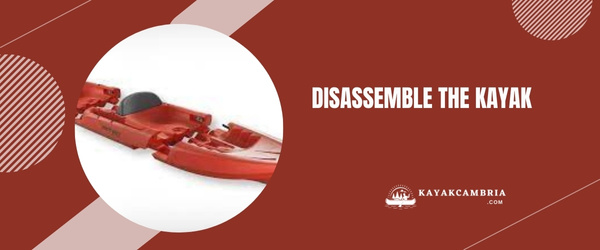
You should also disassemble your kayak before storage. This means taking off any accessories like seats, pedals, or anything else that may be attached to it.
Use kitchen appliances like an electric mixer with a dough hook attachment to scrub off any stubborn areas of grime.
Drying The Kayak
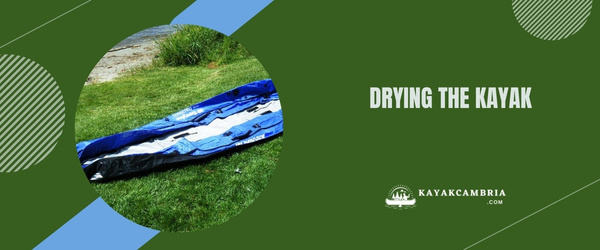
It’s also important to dry your kayak before storing it as water can cause mold or mildew growth, which will ruin the material of your vessel and makes it a good home for other insects like mosquitoes. Use towels or air driers instead of just leaving them wet on a shelf.
Covers

If you have a cover for your kayak, it’s best to put this on before storage. Covers protect the vessel from dust and debris as well as light which can damage any of its materials.
Padding
If your kayak has padding on the seat, cockpit, or bow then it should also be placed inside before storage.
Spray Wax

You can use a spray wax to protect any metal parts that may become rusty and give a shine for when you are ready to bring it back out. This is especially important if you have an older kayak that hasn’t been well taken care of.
How To Store Kayak In The Garage?
If you have a garage, it’s best to store the kayak there. You will be able to protect the vessel from any dust or bugs that may find their way inside as well as keep it out of direct sunlight and away from heat sources like your vehicle.
1. Standing Kayak Racks
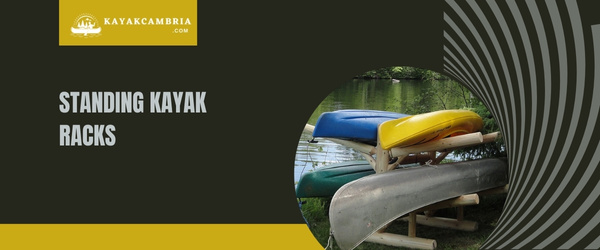
Standing kayak racks are the perfect solution for those who lack storage space but still want to enjoy kayaking. The most common question we get is about what height should they be mounted at. A general rule of thumb is that the height should correspond with how tall you are, so it’s best to experiment with different heights before settling on one as “the right one.”
2. Ceiling Rack
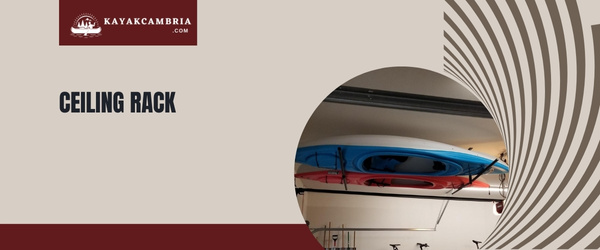
It is best as it takes the least amount of space and is the most affordable solution. However, it’s a good idea to make sure that you have another kayak rack in case there are two vessels at one time.
3. Kayak Hanger
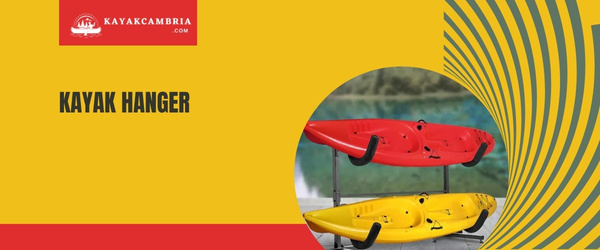
Another viable option for storing a kayak in an apartment or small house is to hang it from the ceiling with a kayak hanger. They are quite easy to install and can be done by anyone regardless of how handy they may think they are.
4. Hanging Kayaks On Wall

If you like the idea of hanging your vessel but need more than one, you can hang them from the wall instead of hanging them on a kayak rack.
Consider how many boats will be hung and make sure there’s enough space to fit both vessels as well as some room between each for ventilation purposes.
A lower mount that’s at ceiling height could also be more vulnerable to critters or accidental impacts.
5. Hoister Storage System
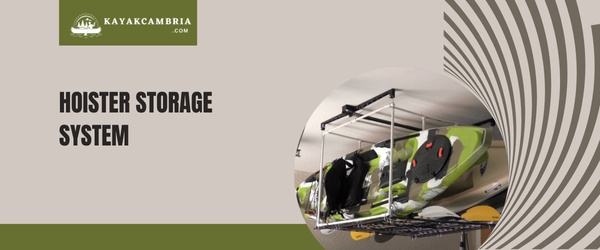
This system is perfect for storing a kayak indoors. Hoisters are typically used in homes or offices to store furniture, so it’s natural that they would be an ideal tool for kayakers who need to take their vessels inside and out often. And it is way better than a suspended rack as it can be arranged according to your preference.
6. Aluminum Wall Cradles
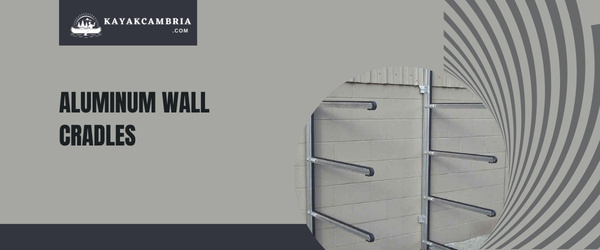
Wall cradles are a great solution if you want to store kayaks on the wall. They’re small and lightweight, so they can be easily stored in tight spaces that might not accommodate long racks or even short ones.
7. Free-Standing Rack
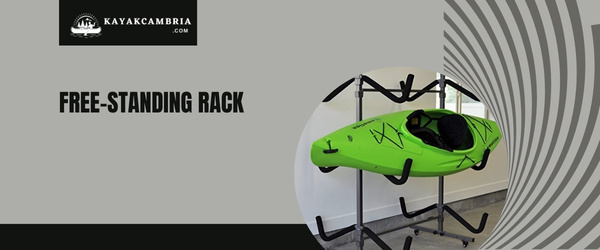
A free-standing rack can be useful for storing a kayak with the same specifications when you don’t have any space to spare.
The downside is that it takes up just as much time and energy to assemble, but there’s no denying how convenient they are. It all depends on your needs!
8. Suspended Rack
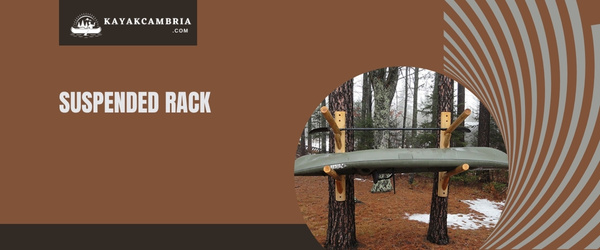
A suspended rack is the best option for kayaks with a width of 18 inches or less. There is no need to attach them to anything, and they can be mounted at any height that you want!
The downside? It costs more than others rack and the kayak will often be suspended flat.
If you don’t want your boards to sag, use a ceiling mount. This is more expensive than a pulley system but it doesn’t sag.
9. Upright Storage
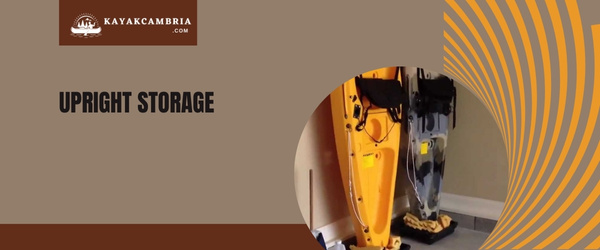
Upright storage is a great way to store kayaks in your garage. It takes up minimal space width-wise. All that’s required are a couple of straps and secured mounts on the wall where those straps can be attached. It’s also important to make sure there’s something underneath the bow or stern of your kayak to keep it from getting scratched. When storing your kayak in an upright position, keep in mind that the straps must only prevent it from tipping over and not falling completely.
10. Wall-Mounted Sling Set
To ensure your kayak stays secure, this solution requires special wall-mount hardware to be installed in the garage. Once set up, straps are used to keep your vessel snugly in place. The straps, originating from the mounting hardware, will be draped around your kayak to form a sling-like shape that securely hangs it up and against the wall. This is an excellent way to store a kayak in an apartment or small house since it requires less space.
11. Portable Stands

Portable stands are an easy and portable solution for kayak storage. Portable stands generally require enough floor space in your garage or yard to be placed properly, but they are also the best option if you plan on changing where you store your kayak often. Portable stands make it easy to relocate this type of kayak stands with minimal effort, making them a great option for those who need portability.
Best Outdoor Kayak Storage Ideas (2024)
When you store your kayak outside, it won’t last very long. But kayak storage Ideas can help to prolong the life of your kayak. Many kayak storage Ideas can be implemented for Outdoor kayak storage.
1. Freestanding Kayak Rack
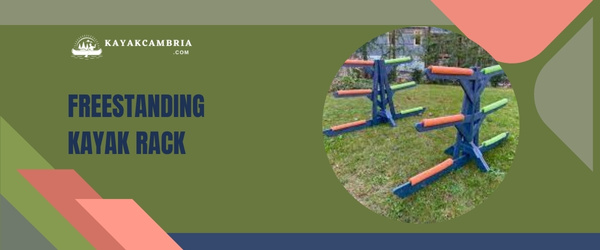
It is not one of the best kayak storage Ideas to use, but it is one you might consider for this purpose if there are no other options available.
2. Outdoor Kayak Hanger
This is the best kayak storage Idea on our list of Outdoor kayak storage ideas because not only will your boat be protected from rain and snow that could make its way into the kayak, but also because of the way it is designed.
3. Undercover Storage System

This is a good option for Outdoor kayak storage that will not only protect your boat from rain and snow but also keeps it out of direct sunlight.
4. Kayak Tent

If you want the cheapest kayak storage Idea, you can buy a kayak tent. This is not the most convenient way to store your kayak because it limits where you place your kayak in your backyard and don’t cover the whole thing up.
Kayaks that are stored upside down on racks or stands like clothes dryers have wheels at one end of the kayak to help maneuver it in and out of the storage.
This is a good way for Outdoor kayak storage because you can store your kayaks anywhere. Store your Kayaks indoors or undercover if possible – this will protect them from UV, weathering, dirt/dust, and pests.
DIY Kayak Storage
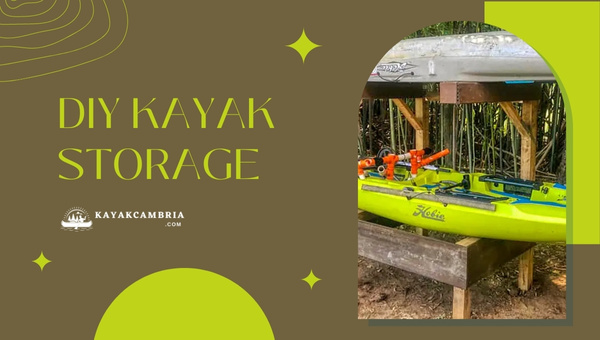
If you’re looking for a cheaper kayak storage Idea, this is a good option. It’s not as convenient or pretty to look at but it works great and doesn’t cost anything:
- Use old surfboards as the base of your DIY Kayak Storage
- You want them to be long enough that they are level with the kayaks and have the same width as kayaks.
- Cutaway any excess wood that could poke out to avoid injury
- Place two surfboards about one foot apart on their sides, then place the third board lengthwise across them with its end touching both of the other long edges.
- This will give you three boards that create a sort of triangular block on the ground for your kayaks to sit in.
- Attach two smaller surfboards to the sides as supports when you place these boards together
- This will help keep your DIY Kayak Storage stable and from falling over, plus they are there for extra support if someone bumps into it (this is great because kayaks are heavy!)
- If you want to create a more open space for your kayak storage, place the boards at an angle and cut away any excess.
This will allow it to be free-standing if needed so that they can operate as two individual blocks on either side of each other. You can also make this DIY kayak.
If you want to store more than two kayaks, just keep doing this process with each set of three boards until you have enough storage space for all of your kayaks.
How To Store A Kayak During Winter?
Storing a kayak during the winter months is essential if you want to keep it in good condition. To do this, you’ll want to make sure you choose a spot that is dry and protected from any harsh weather conditions. During winter, the best place to store your kayak is indoors. This will protect it from the elements and any potential damage that can be caused by extremely cold temperatures.
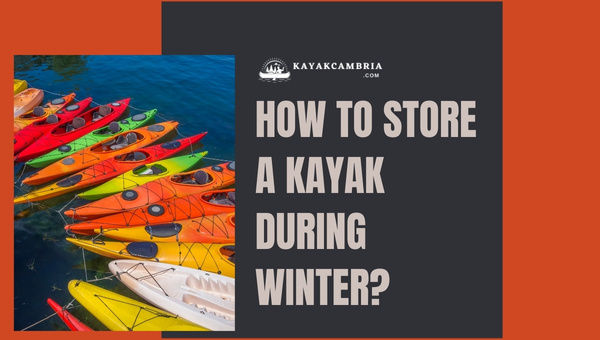
If storing outdoors, make sure you elevate the kayak off the ground using a kayak stand or rack and cover it with a waterproof tarp or kayak cover. Additionally, you’ll want to make sure you tie down the cover to keep it secure in place.
You need to perform the same practices for storing a kayak, regardless of the season. Regularly check on your boat and make sure it is in proper condition. Also, prepare it for storage by taking off any unnecessary items and cleaning off dirt or debris before covering it up with a kayak cover and/or waterproof tarp.
Lastly, be sure to keep it locked if you are storing it outdoors. This will help ensure that your kayak is safe and secure from potential theft or damage. Storing a kayak can be a bit tricky during the winter months, but with proper preparation and care, you can keep your boat in excellent condition for years to come.
Tips For Storing Your Kayak Safely For The Short Term
If you’re looking for short-term kayak storage, it’s important to make sure you store your kayak in the right way. This will help protect it from damage and keep it safe until you’re ready to hit the water again. You need to consider the following situations using short-term kayak storage:
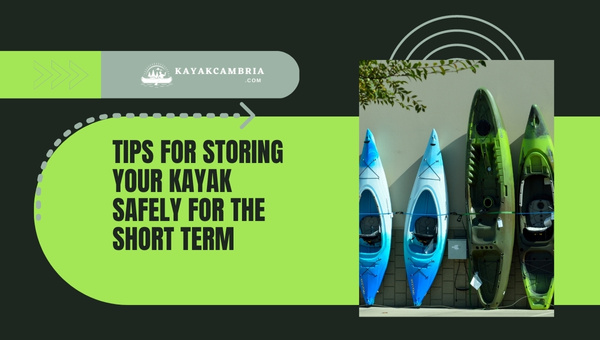
- Day-to-day utilization
- On vacation getaways
- During brief stretches of inclement weather
- Throughout the extended off-season in temperate climates
- Whenever you need to take a rest from kayaking
No matter the situation, storing your kayak properly is essential to prevent damage and keep it safe. Here are some tips for storing your kayak safely in the short term:
- Ensure easy access: When storing your kayak for short periods, you need to make sure that it is easily assessable. This means placing it in an area that is easy to get to so you can enjoy the water whenever you feel like it.
- Make sure to take your time and carefully put it away: When you’re done with your kayak for the day, take the time to put it away properly. This means taking off any unnecessary items and cleaning off dirt or debris before you store them.
- Secure it: If you’re storing your kayak outside, be sure to lock it up. This will help ensure that your kayak is safe and secure from potential theft or damage.
With these tips, you can keep your kayak safe and sound for short-term storage. It’s important to take the time to store it properly and make sure it is safe until you’re ready to use it again. With proper preparation and care, you can keep your kayak in excellent condition for years to come.
Tips For Storing Your Kayak Safely For The Long Term
For the long term, you need to consider your kayak’s storage options very carefully. Depending on the kind of kayak you have, your long-term storage options may vary. An inflatable kayak is easy to store, simply deflate and roll or fold it up and keep it in a cool, dry place.
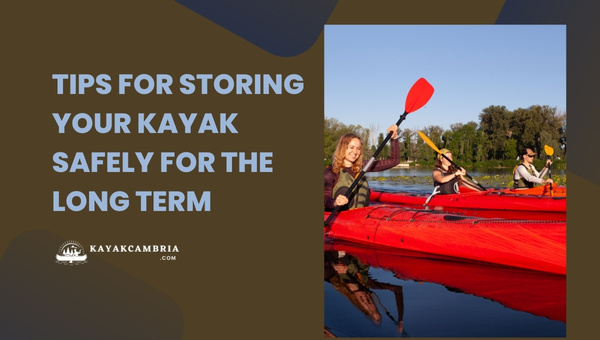
For other types of kayaks that are not foldable or collapsible, you’ll want to make sure you choose a spot that is dry and protected from any harsh weather conditions. Here are some tips for storing your kayak safely in the long term:
- Determine your space needs: Before you start storing your kayak, make sure you know the size of the storage area you’re working with. You don’t want your kayak to be too cramped or exposed in its storage space.
- Ensure the kayak remains spotless: It is important to maintain your kayak’s cleanliness when storing it for the long term. Make sure that you rinse any dirt or debris off the kayak before storing it away.
- Follow the same steps as for short-term storage: You’ll want to take the same steps as you would for short-term storage, such as covering the kayak with a tarp or sheet and applying lubrication to the moving parts.
By taking the necessary steps to keep your kayak clean and protected, you can ensure that it lasts for years to come. With these tips, you can keep your kayak safe and sound for the long term.
Mistakes To Avoid When Storing A Kayak
When storing your kayak, it’s important to take the necessary steps to keep it safe and secure. Here are places, conditions, and methods to avoid when storing your kayak:
1. Locations To Avoid When Storing Your Kayak
It’s important to make sure you store your kayak in the right place. There are some places to avoid when storing your kayak:
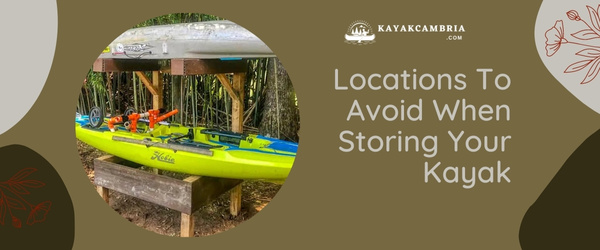
- Anywhere reachable by wildlife: Keep unwanted guests away from your kayak by storing it indoors or covering it adequately when not in use. Doing so will protect you from any surprises that may arise next season as pests love to make a cosy home inside the cockpit of your boat.
- At ground level: Placing your kayak directly on the ground can cause damage to its hull and increase wear and tear. Instead, place it off the ground on a rack or other support system. You can also use tie-downs or straps to secure it in place.
- Surrounding Your Everyday Essentials: Placing your kayak near doors, windows, and other frequently used areas can cause unnecessary wear and tear. Make sure to store your kayak on the ceiling and hang it on the wall.
- In areas visited by many: Avoid storing your kayak in an area where it can be accidentally bumped into or damaged. Instead, choose a spot that is quiet and out of the way.
- On tough or level surfaces: Placing your kayak on a hard, flat surface can cause it to become scratched and damaged. Try using foam padding or cushion between the kayak and the surface to prevent any unnecessary damage.
- With an open-air cockpit: Make sure your kayak is covered at all times when not in use. Doing so will help keep debris and dust from getting into the cockpit and help protect your kayak from any potential damage.
- Without secure locks: Keep your kayak secure with quality locks. Doing so will help ensure that thieves or pests do not have access to your kayak and can keep it protected.
- HHard-to-AccessLocation: Make sure you store your kayak in a place that is easily accessible when you need it. Storing your kayak somewhere hard to reach can be inconvenient and can make it difficult to access when you need it.
2. Weather And Other Conditions To Avoid When Storing Your Kayak
It’s important to be aware of the weather and other conditions you may encounter when storing your kayak. Here are some tips for protecting your kayak in extreme weather and other conditions:
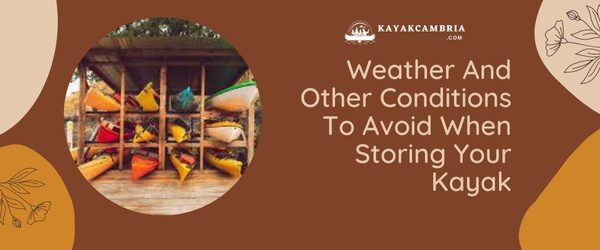
- Avoid direct sunlight: UV rays from the sun can cause wear and tear on the hull of your kayak and fade the colours. Make sure to cover your kayak with a tarp when not in use, or store it in a garage or shed.
- Avoid extreme temperatures: Extreme temperatures, either hot or cold, can damage the structure of your kayak. Storing it in an area with more moderate temperatures and good airflow will help protect it from any potential damage.
- Avoid Moisture: Moisture can damage the structure of your kayak and cause rot. Be sure to store your kayak in a dry, well-ventilated area to prevent any potential damage. It’s also important to keep an eye out for any signs of moisture build-up over time.
3. Storage Positions To Avoid When Storing Your Kayak
When it comes to storing your kayak, there are certain positions you should avoid as they can cause unnecessary wear and tear. Here are some storing positions you should avoid:
- Securely strapped in: Tight straps can cause damage to your kayak’s hull, so make sure the straps are just tight enough to hold it in place without causing any damage. You should also make sure to use straps of the right size and material for your kayak.
- Upward-Facing Cockpit: When storing your kayak make sure the cockpit is facing down. This will help keep the water out and prevent any water from pooling inside the cockpit. You should also make sure to use a cover when not in use.
- On its lateral side: For maximum protection, store your kayak on storage bars with the side that touches the bars facing upwards. This precautionary measure will help prevent any indentations and wear from occurring.
- Suspended from the straps: Hanging your kayak by the handles on its front and back can put tremendous strain on its ends, potentially resulting in a distorted shape. To prevent this from happening, you should avoid suspending it in those areas.
- On a cart with wheels: When it comes to transporting your kayak, ensure you are only using carts with wheels for this purpose. However, when storing the boat away after use, make sure to keep the cart in another location as its presence can lead to an unsafe situation due to pressure on one end and potentially rolling into someone or something.
How To Store A Kayak Vertically?
Vertical kayak storage is the best way to store your kayak if you’re short on space or just want a secure, safe way of storing it for long-term use. This method is especially useful for those who plan to store their kayaks outdoors because it helps prevent water damage and exposure to the elements.
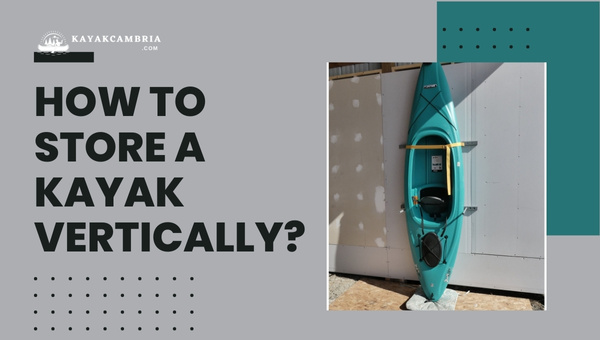
To ensure the kayak stays standing, position it at a slight angle. Set the kayak so that the bow is in the air and the stern is on the ground. The stern of a kayak is typically wider than the bow, making it heavier than the front. This can help keep your kayak from tipping over while stored vertically. Here are some tips for proper kayak storage vertically:
- Place a blanket, foam blocks, or other soft materials around the kayak to help it stay in place and cushion any impacts.
- To create a secure set-up, use wooden pegs and straps to secure the kayak in place.
- Invest in a kayak rack to store the kayak vertically safely and securely.
- To keep dirt and debris out, cover the cockpit with a waterproof tarp or other material. It will also prevent any water from collecting inside the kayak.
- Make sure to find an area with enough space to store the kayak vertically. Avoid areas with a lot of activity, like a busy sidewalk or street. It’s also important to make sure the ground is level and firm for maximum support.
How To Store A Kayak In An Apartment?
When it comes to storing a kayak in an apartment, you’ll need to get creative. With limited space, it can be hard to figure out the best solution for stowing your vessel. Below are the different methods for storing a kayak in an apartment:
1. Wall-Mounted Racks
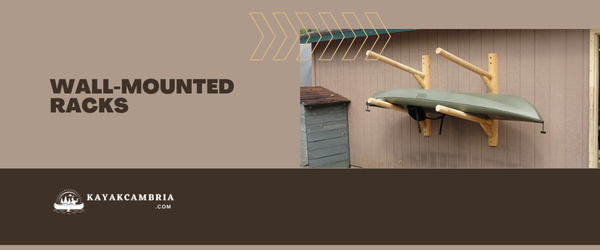
Wall-mounted racks are the most popular option for stowing kayaks in an apartment. These racks can be mounted directly to the wall and provide a secure hold for your boat. They also free up extra floor space, making them ideal for smaller apartments.
2. Ceiling Suspension Systems
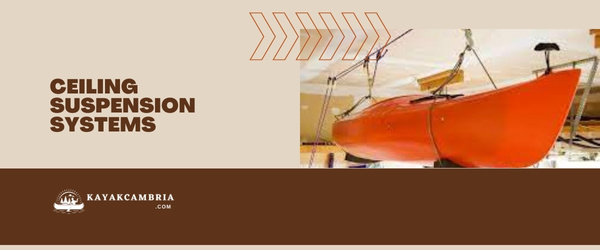
Another great option for saving space is a ceiling suspension system. You can choose from a variety of different systems, such as hooks and straps, that you can hang from the ceiling. Just make sure they are strong enough to hold the weight of your kayak.
3. Standing On The Floor
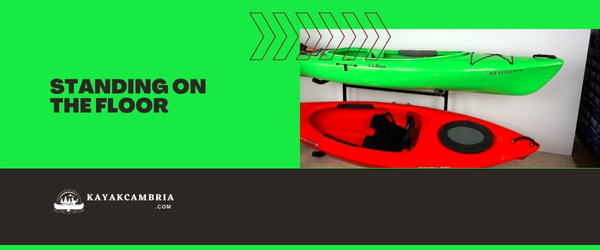
If you don’t have a lot of wall or ceiling space, then consider purchasing a stand to store your kayak on the floor. These stands are easy to assemble and require minimal tools. They also provide great stability, so you won’t need to worry about it tipping over.
4. Storage Racks
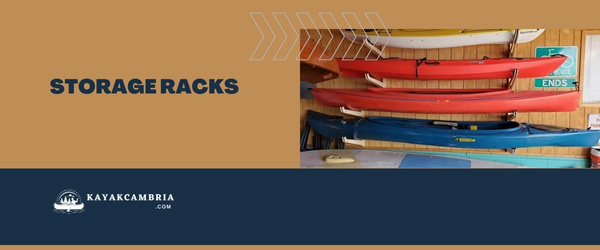
If you’re looking for a less permanent solution, then consider investing in a portable rack. This type of storage system is easy to set up and take down as needed. Plus, they are lightweight and compact enough to be moved around your apartment with ease.
5. Secured By Straps
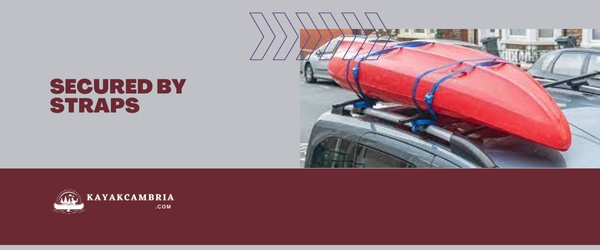
If you’re looking for a low-cost solution, then consider using straps to store your kayak. This technique can be used whether it’s on the wall, ceiling, or floor. Just make sure to use heavy-duty straps that are rated for the weight of your vessel.
6. Overhead Suspension System
An overhead suspension system is similar to a wall-mounted rack, but instead of attaching the kayak directly to the wall, it hangs from an overhead beam or branch. This method can be used both indoors and outdoors, making it a great option for those who don’t have much space available.
Importance Of Good Kayak Storage Practices
Kayaks are an incredibly durable piece of equipment, but even they require proper care and storage. Improper storage can lead to unnecessary wear and tear on the kayak and can make it more vulnerable to damage. Here are some reasons why proper kayak storage is necessary:
1. Weather Protection

Proper storage will ensure that your kayak is protected from the elements and won’t be exposed to rain, snow, or UV rays from direct sunlight. This will help to prevent any hull damage, warping, fading, and other issues that can occur over time. If you are storing your kayak inside, make sure to choose a dry and well-ventilated area.
2. Avoiding Deformity And Damage

Kayaks stored with an uneven weight distribution can suffer from dents, distortion, and deformation over time. To avoid such issues, don’t forget to store them on their side instead of flat on the hull during prolonged storage periods to ensure optimal performance out in the water. This way you won’t have any unpleasant surprises awaiting you while you’re kayaking.
3. Safeguard Against Theft
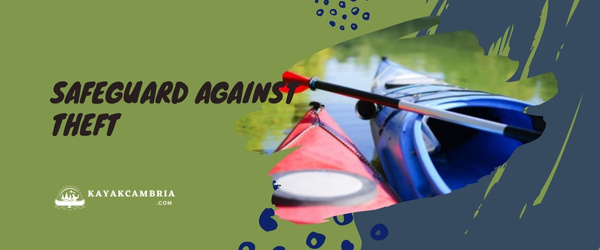
Protect your kayak from potential theft with proactive measures. If possible, keep it safely stored in the house or garage; however, if that is not an option for you, make sure to hide the kayak and secure it with a chain and padlock tied to a permanent structure, this will ensure thieves can’t easily snatch your kayak away. Taking these precautions now could save you from major loss later on.
4. Safeguarding Yourself
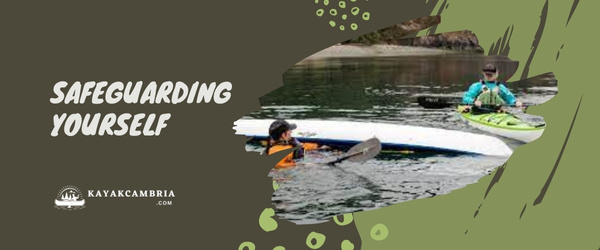
All too often, this critical aspect is neglected – storing a kayak properly for everyone’s safety. On average, a kayak can weigh up to 80 pounds; it’s simply not worth risking injury by leaning the vessel against the wall or using unsteady suspension techniques. Even if you dodge harm from an unlucky drop-off accident, the hull will likely take considerable damage upon impact. You should use tight straps that are strong enough to hold the kayak in place while avoiding any damage.
Which Option Fits Your Needs The Best?
The best kayak storage solution for you will ultimately depend on what you’re working with. If you have plenty of wall space, a wall-mounted kayak rack is probably your best bet. It’s an affordable solution that is easy to install and doesn’t take up much space.

If you have tall garages with a lot of unused space between the tops of your vehicles and the garage ceiling, an overhead suspension system is recommended. This is a great solution for storing multiple kayaks in the same place without taking up any floor space.
If you’re just looking to store your kayak outdoors, then consider a rack or stand that can easily be moved around as needed. No matter what type of storage option you choose, always remember to practice safe and mindful loading and unloading procedures when handling your kayak. With these tips in mind, you’ll be sure to safely and securely store your kayak for years to come.
Frequently Asked Questions
1. How to store a fishing kayak?
You can store a fishing kayak in an upright position and secure it with straps, blankets, or foam blocks. Make sure to find an area with enough space and avoid areas with a lot of activity. You can also invest in a kayak rack to store the kayak safely and securely.
2. How to store a sit-on-top kayak?
Store your sit-on-top kayak in either orientation, deckside up or down. If you do need to store the vessel horizontally on the ground, cover its hull with blankets or padding before doing so. For more convenient storage options, J-style racks are an ideal choice; just make sure they fit comfortably and securely around the body of your kayak and that their edges are adequately padded.
3. How to store caught fish on a kayak?
Caught fish can be stored safely in an insulated cooler or bait bucket. If you don’t have one, opt for something like a waterproof bag or container that will keep the fish cool and secure during transport. Make sure not to fill the container too full as it will affect your kayak’s buoyancy.
4. How to store a kayak in a shed?
Storing your kayak in a shed is a great way to protect your vessel from the elements while saving floor space. Make sure to select a shed that’s large enough to store your kayak, as well as any other items you may need in the future. If possible, opt for one with adjustable shelves and hooks so you can easily hang paddles and life jackets.
5. How to properly store a kayak?
To store a kayak properly, choose an area that is away from direct sunlight and moisture. If the kayak has to be stored outdoors, look for a sheltered spot that’s free of debris and animals. Make sure to secure the vessel with straps or blankets before storing it in either an upright or laying down position. You can also invest in a storage rack designed specifically for kayaks.
Final Words
Storing a kayak doesn’t need to be difficult or expensive. With the right storage system, you can keep your vessel safe and secure without taking up too much space. Whether it’s an overhead suspension system, storage rack, or simple straps, there are plenty of options available for you to choose from. We hope this article “how to store a kayak” has provided you with the information you need to make an informed decision. Happy paddling!

